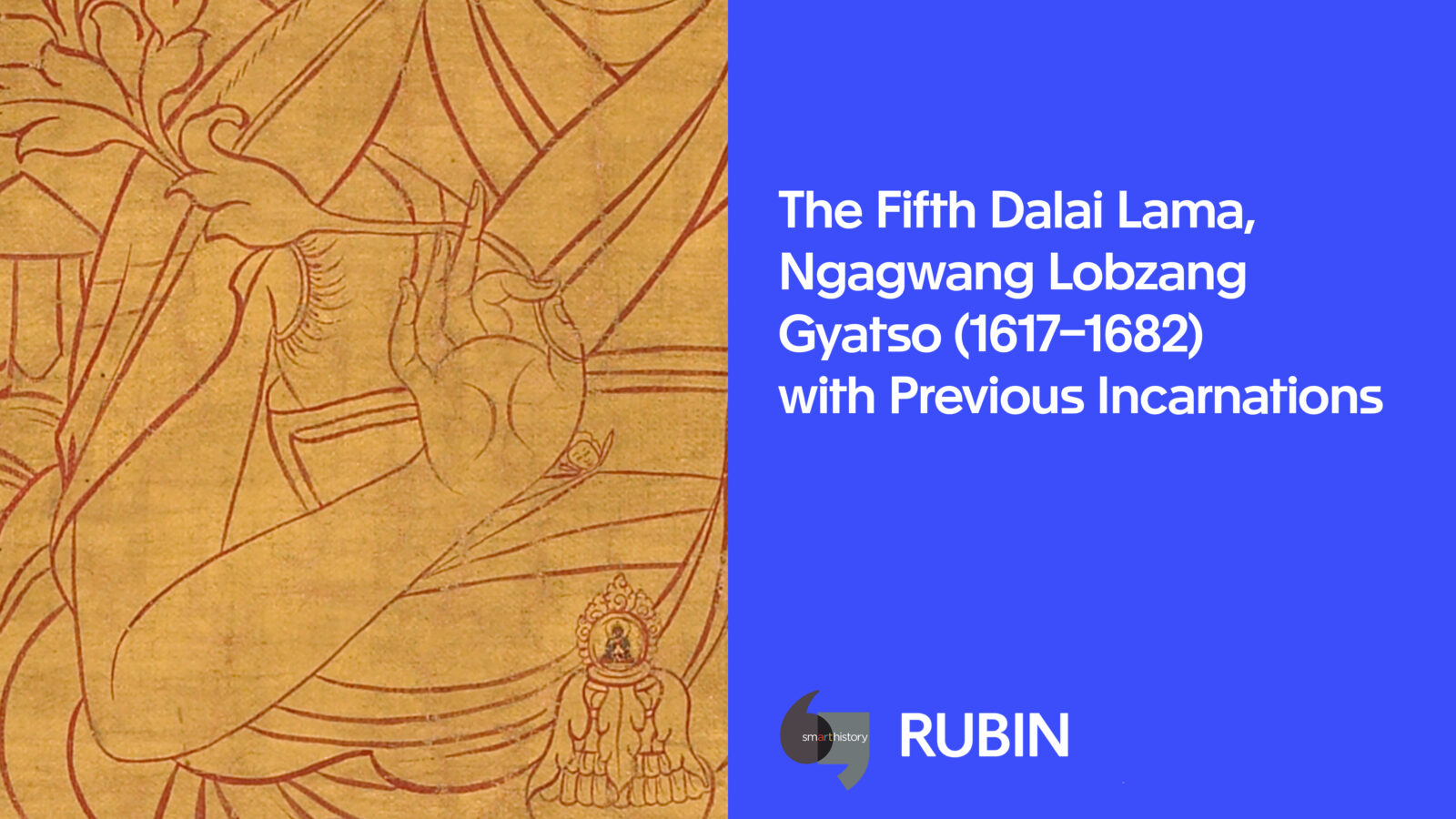Central Tibet
18th century
Central Tibet
18th century
The Fifth Dalai Lama, Ngagwang Lobzang Gyatso (1617–1682), depicted here holding a lotus and a vase of longevity, was the first theocratic ruler of a unified Tibet. His status is expressed through a language of divine inheritance, the succession of past glorious empires through reincarnation. The Fifth Dalai Lama identified himself as an incarnation of the Bodhisattva of Compassion, Avalokiteshvara, depicted in this painting at top center. Avalokiteshvara was not only the patron deity of Tibet but also the founder of the Tibetan Empire, Songtsen Gampo (ruled 617-650 depicted at top left), was considered his emanation. By asserting himself as an emanation of Avalokiteshvara, the Dalai Lama was symbolically declaring that his was a divine kingship and more specifically that he was in the lineage of the Tibetan emperor who first united Tibet and thus positioned himself as the rightful inheritor of the old Tibetan Empire.Red background paintings such as this are associated with Buddha Amitabha and his lotus family, which includes the incarnations of the Dalai Lamas. In this sophisticated painting the figures are outlined in red, and their surfaces are painted with an undercoat of yellow and an overcoat of gold. Fine patterns are polished into this gold ground to create a subtle ornamentation in the painting surface.

The passing down of authentic Buddhist teachings from a teacher to a disciple or student, often in the form of a text in a ritualistic context.
In Buddhism merit is accumulated through engaging in positive actions that lead to positive results, such as better rebirths. Buddhists gain merit by making offerings, donating to those in need, reciting mantras, and other good deeds.
The transmission of teachings from one generation to the next, from teacher to student, traced all the way back to the Buddha without interruption. A complete lineage is essential in Tantric Buddhist practices as it makes the blessings of the teaching more powerful.
Himalayan art includes portraits of legendary and historical humans, including accomplished religious teachers (lamas), the Buddha’s original disciples (arhats), and spiritually accomplished tantric masters (mahasiddhas).
Today, Tibetans primarily inhabit the Tibetan Plateau, situated between the Himalayan mountain range and the Indian subcontinent to the west, Chinese cultural regions to the east, and Mongolian cultural regions to the northeast. During the 7th to 9th century, Tibetan rulers expanded their empire across Central Asia, and established Buddhism as the state religion.
Get the latest news and stories from the Rubin, plus occasional information on how to support our work.